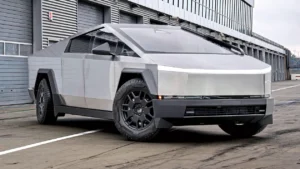Imagine finishing your breakfast in New York, attending a lunch meeting in Shanghai, and being back in Los Angeles for dinner—all in the same day. It sounds like a scene out of a sci-fi movie, but according to Elon Musk, this futuristic form of travel is not only possible—it’s on the horizon. The founder and CEO of SpaceX has once again stirred excitement and debate with his bold declaration: humanity is on the brink of being able to travel to any city in the world in under an hour.
A New Frontier in Transportation
The idea stems from SpaceX’s ambitious work on its Starship rocket—a fully reusable spacecraft currently being developed for missions to the Moon, Mars, and beyond. But Musk isn’t content with exploring the stars alone. He believes the same technology could revolutionize how we travel on Earth.
Dubbed “Earth-to-Earth” transportation, this concept would use orbital-class rockets to carry passengers between major cities. According to preliminary plans, a passenger could board a Starship in London and arrive in Tokyo in roughly 30 to 40 minutes. Musk has stated that most long-haul trips—currently taking 10-15 hours by plane—could be reduced to under an hour.
How It Would Work
The travel experience would begin at a launch platform located on the outskirts of a city, possibly floating at sea to reduce noise pollution. Passengers would board the rocket via a shuttle boat or hovercraft. The rocket would launch vertically into space, enter suborbital trajectory, and then re-enter Earth’s atmosphere, descending near the destination city.
Because the rocket would spend only a few minutes in space before descending, passengers wouldn’t experience prolonged weightlessness. However, they would endure g-forces similar to those in a rollercoaster or high-performance aircraft. Still, SpaceX has emphasized safety and comfort as key factors in the design of this mode of transport.
Speed vs. Practicality
While the idea is thrilling, experts are quick to point out that there are serious logistical and regulatory hurdles to overcome. Building rockets is one thing—making them safe, affordable, and accessible for daily travel is another entirely.
The challenges include:
-
Cost: Even with reusability, launching rockets is significantly more expensive than operating airplanes.
-
Safety: Rocket travel poses higher risks, especially during launch and reentry phases.
-
Infrastructure: Specialized launchpads, landing zones, and transit systems would be required worldwide.
-
Noise and Environment: Rocket launches are extremely loud and could impact local communities and wildlife.
-
Regulations: Airspace management, customs, and international flight regulations would all need major updates.
Despite these hurdles, SpaceX continues testing and refining Starship. The company is focused on its primary goal—sending humans to Mars—but the Earth-to-Earth vision remains part of Musk’s long-term plan.
The Bigger Picture: Musk’s Transportation Revolution
This isn’t the first time Elon Musk has disrupted the transportation industry. With Tesla, he transformed the electric vehicle landscape. With The Boring Company, he’s pushing for underground tunnel systems to reduce surface traffic. And with Hyperloop, he introduced the idea of high-speed vacuum trains.
Each of these ventures aims to solve a specific problem: fossil fuel dependency, urban congestion, and inefficient long-distance travel. The rocket-based Earth travel idea is simply an extension of that philosophy—using cutting-edge tech to collapse distances and connect people faster than ever before.
Musk’s ultimate goal? Making humanity multiplanetary. But even on Earth, he envisions a world where physical distance is no longer a barrier to opportunity, collaboration, or experience.
Global Implications
If successful, Earth-to-Earth travel could have profound implications:
-
Business: Executives could attend meetings across continents without losing days to travel.
-
Tourism: People could explore the globe more frequently and spontaneously.
-
Global Unity: Increased movement might foster greater cultural exchange and understanding.
-
Military & Aid: Governments could deploy resources and personnel quickly to respond to emergencies.
However, it could also deepen divides between those who can afford such travel and those who cannot—at least in the early stages. As with all technology, accessibility will be key to its long-term impact.
What the Experts Are Saying
Many aerospace engineers and economists are cautiously optimistic. They agree that the basic physics works—the concept is feasible in theory. But they’re more skeptical about its scalability and commercial viability. NASA has even partnered with SpaceX on space travel, lending credibility to Musk’s ideas, though not necessarily endorsing Earth-to-Earth travel yet.
Critics argue that efforts might be better spent improving current aviation technology—making it greener, faster, and more efficient. But Musk, ever the futurist, believes leapfrogging to rockets could unlock far more potential.
Timeline and Reality Check
Musk is known for his aggressive timelines—many of which slip due to unforeseen challenges. While he has hinted that test flights for Earth-based rocket travel could happen within the next few years, it’s likely that a functioning, regulated system is at least a decade away.
Still, every iteration of Starship, every successful launch and landing, brings that vision closer. And even if it takes longer, the fact that we’re having serious conversations about global rocket travel is a testament to how far technology—and imagination—has come.
Final Thoughts
Whether or not we’ll be booking rocket tickets anytime soon, Elon Musk’s bold claim has reignited our sense of possibility. The dream of flying halfway across the world in less time than it takes to watch a movie might still be a ways off—but it’s no longer pure science fiction.
One thing is clear: the future of travel is poised for lift-off. And with innovators like Musk at the helm, the sky is no longer the limit.







